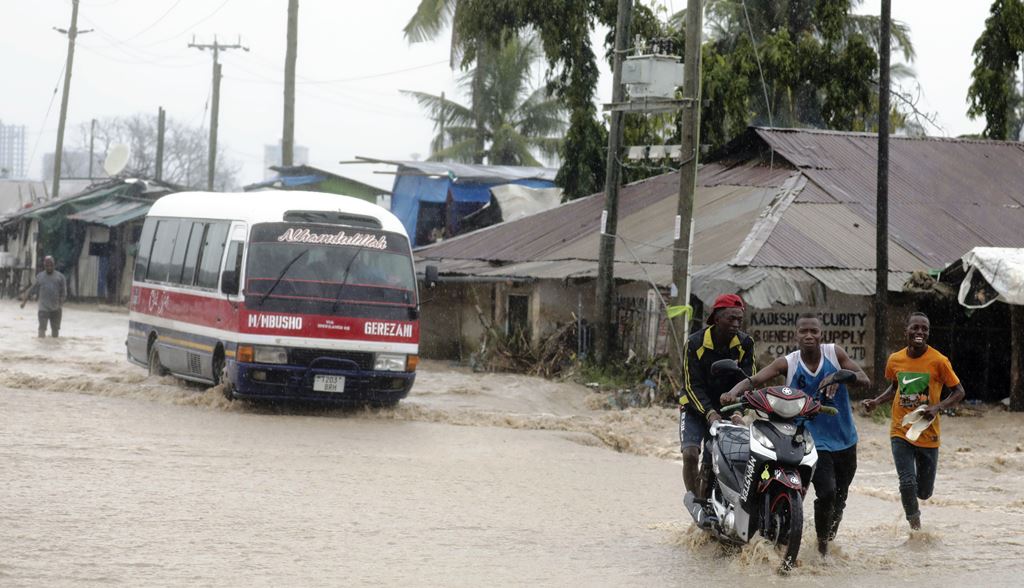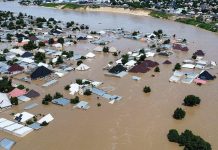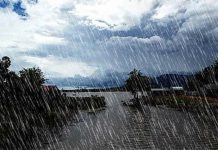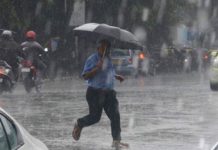AfricaPress-Tanzania: HEAVY rains continued pounding several parts of the country on Sunday, with the Tanzania Meteorological Authority (TMA) reiterating that the public should take precautions to avoid calamities.
Residents in low lying areas have particularly been asked to be extra cautious or move to higher grounds.
Over the past few days some regions have experienced downpours which have disrupted infrastructures and paralysed other social activities.
The TMA’s weather forecast issued on Saturday evening warned that the rains could continue for the next 24 hours in various parts of the country.
“Most strong winds are also expected along the entire Northern Coast; therefore the TMA issues a caution among the public,” cautioned Mariana Materu, TMA’s weather analyst who presented the forecast on the agency’s YouTube account.
She mentioned regions like Kagera, Geita, Rukwa, Katavi, Kigoma, as well as southern and central regions which would be experiencing thundershowers during the whole of yesterday.
Another weather analyst from TMA, Ms Doreen Mwara, also said the weather forecasts showed that the rains could continue particularly in the Northern and Southern Coast of the country.
“The authority cautions over heavy rain periods in areas such as in Dar es Salaam, Tanga, Pwani, Morogoro, Pemba Islands and others, therefore, residents in these areas are advised to take precaution to avoid effects of the rains,” she explained.
The Dar es Salaam City, for instance, received heavy rains from Saturday night until yesterday evening, flooding several key infrastructures—including city roads and drenches. Some roads were closed.
When recently issuing the weather forecast for March-May ‘Masika’ rainfall season, the authority said most parts of the country would likely experience normal to above normal rains which may have impacts on livelihoods.
The Masika rainfall season is specific to areas of the northeastern highlands (Arusha, Manyara and Kilimanjaro regions), northern coast Dar es Salaam, Pwani (including Mafia Island, Tanga regions, northern parts of Morogoro region, and Unguja and Pemba Isles, Lake Victoria Basin (Kagera, Geita, Mwanza, Shinyanga, Simiyu and Mara regions) and the northern parts of Kigoma region.
TMA Director General Dr Agness Kijazi said sufficient rains especially over the areas expected to receive normal to above normal rains are likely to favour crops which are adaptive to excessive soil moistures such as paddy.
In another occasion last week Dr Kijazi said March and April, 2019 were the warmest months of the year with country mean temperature higher than long-term average by 1.1 °C and 1.6 °C respectively.
On the status of climate condition, she said, since 1970 there were thirteen (13) events of above normal ‘vuli’ rainfall and only four (4) events of above normal ‘masika’ rainfall and the year 2003 was the driest year on record since 1970.
She said the year 2003 was the driest year on record since 1970 adding that above normal and record-breaking rainfall have been observed often during years of the strongest El Niño events (example; 1982 and 1997) and years with strong Indian Ocean Dipole (example;1997 and 2006).
Dr Kijazi noted that, from 2011 to 2019, many severe weather events with heavy rainfall were observed in February, April and May for masika season and October and December for ‘vuli’.







